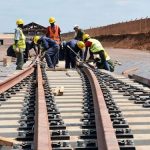Artisanal cobalt mining in the Democratic Republic of Congo (DRC) has plunged to historic lows, contributing just 2% to the country’s total cobalt output in 2024, according to the Cobalt Institute’s latest annual report released on May 14, 2025.
This marks a dramatic decline for a sector that, in previous years, supplied between 10% and 30% of the DRC’s cobalt production. The drop underscores the growing dominance of industrial mining and ongoing challenges faced by small-scale miners.
“In 2018, when cobalt prices exceeded $40 per pound, artisanal miners accounted for approximately 10% of national output,” the report notes. “By 2024, their share had dropped below 2%, translating to just about 1% of global cobalt supply.”
Analysts attribute the contraction to two primary factors: the rapid scaling of industrial mining operations and a multi-year slump in cobalt prices that made small-scale mining less viable.
The report stops short of disclosing precise output volumes from artisanal sources, making it difficult to independently verify the extent of the decline. Some observers have criticized the lack of transparency in DRC’s mineral reporting, which does not distinguish cobalt production by mining method—unlike data for gold, tin, or diamonds.
Despite the shrinking artisanal footprint, the Cobalt Institute suggests this trend is more reflective of the industrial sector’s rapid growth than an outright collapse of artisanal activity.
However, the dynamics may shift in 2025. A government-imposed suspension of cobalt exports, announced in February, has sparked a price rally of more than 50% since the start of the year. The rebound could incentivize a short-term resurgence in artisanal mining as prices improve.
With global demand for cobalt continuing to rise—fueled by electric vehicle production and battery technologies—the future balance between artisanal and industrial supply in the DRC will remain a key issue for policymakers, supply chain managers, and human rights advocates.















